This summer, if you’re planning a trip through Wyoming or the Black Hills region, make sure to visit Devils Tower National Monument. I must say, it’s an impressive geological wonder and a sacred site, unlike any other in the United States. As the nation’s first national monument, Devils Tower captivates visitors with its towering basalt columns, Native American cultural significance, and magnificent views.
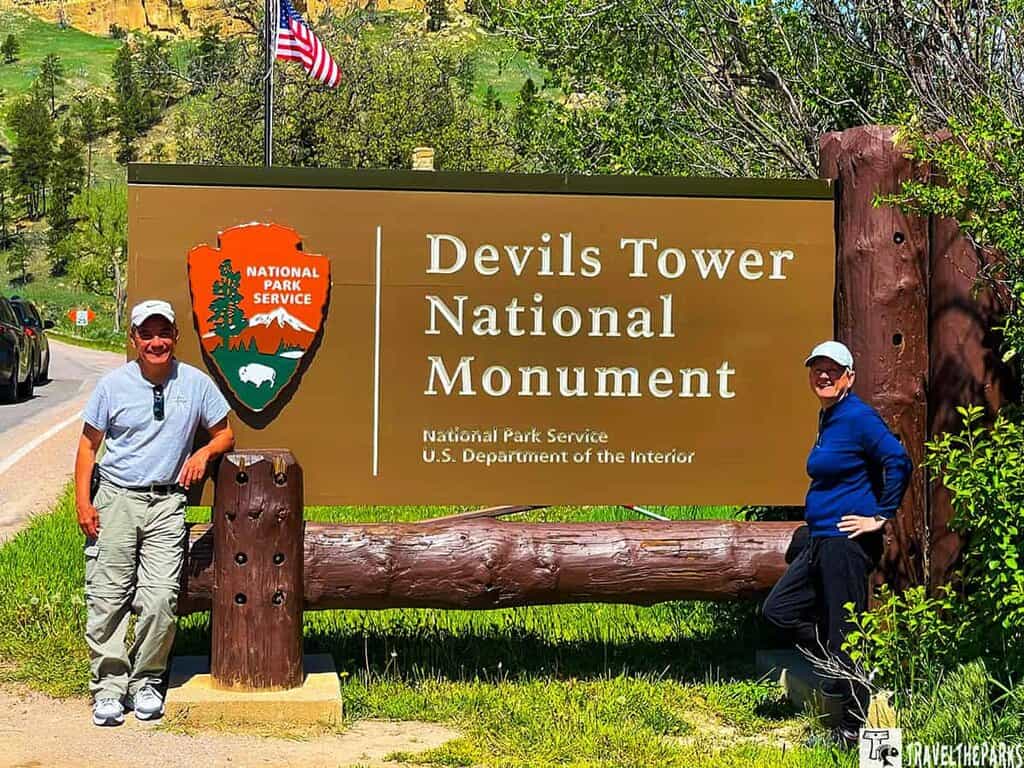
The Devils Tower National Monument is clearly visible from miles away. Dominating the skyline, it rises from the green valley floor and literally towers above the plain in northeastern Wyoming. A butte, Devils Tower is made of igneous rock, possibly a laccolithic. It rises 1,267 feet above the Belle Fourche River, measuring 867 feet from summit to base.

This post may contain affiliate links, meaning if you purchase something through one of these links, we may earn a small commission at no extra cost to you! Read the full disclosure policy here.
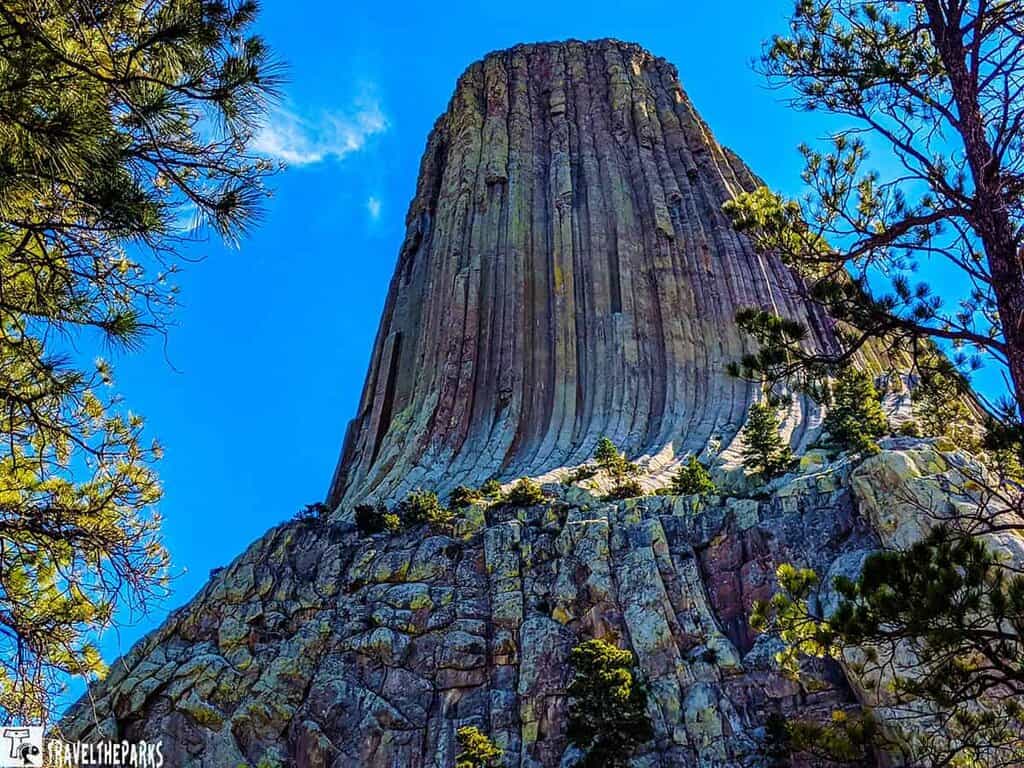
Table of Contents
Navigating to Devils Tower from Nearby Cities
The prominent landmark is a great stop if you are on your way to Theodore Roosevelt National Park, Yellowstone or Grand Teton National Park. As part of our Black Hills road trip adventure, we did this as an easy 2 hour day trip from Rapid City (107-miles). We combined it with the Spearfish Canyon Scenic Byway, Deadwood, and Sturgis.
- If you’re coming from Rapid City, South Dakota, it’s about a 1 hour 45 minute drive west (110 miles) via I-90 and US-14.
- From Gillette, Wyoming, expect a 1-hour drive northeast (65 miles), and from Spearfish, South Dakota, it’s roughly 75 miles or 1.5 hours.
- Alternatively, exit 153 from Interstate 90. Follow U.S. 14 east to Wyoming 24 east to Wyoming 110 west to the monument. The tower is 9 miles south of Hulett, WY.
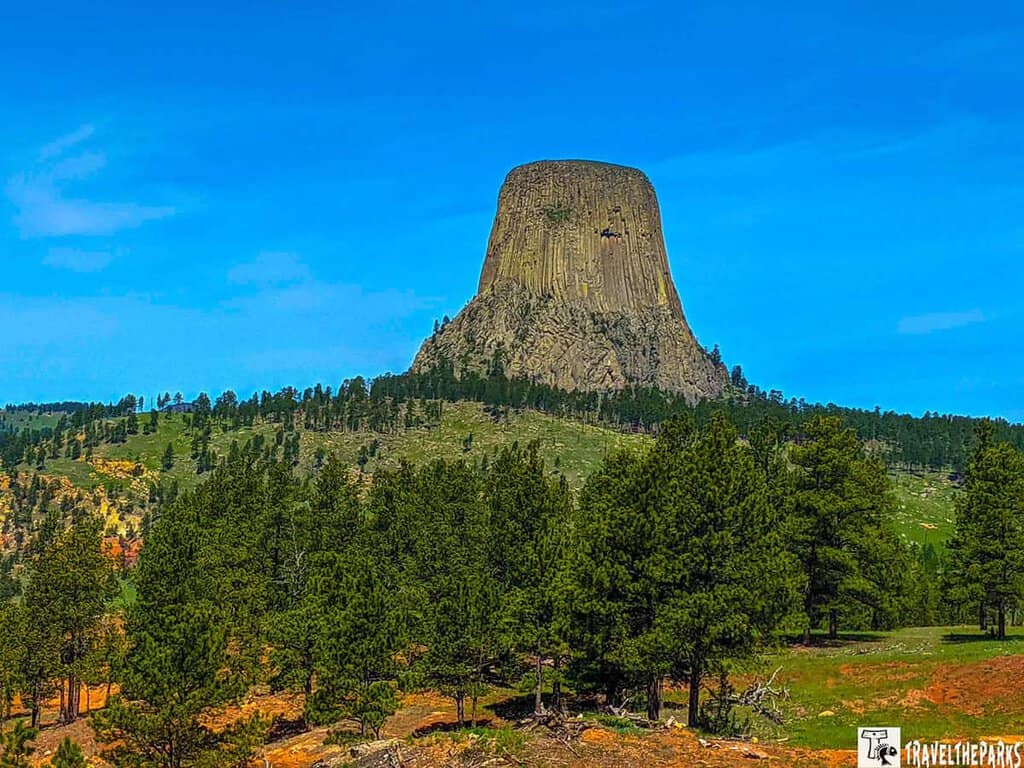
What to Know Before You Visit: Devils Tower National Monument
- Entrance Fee: $25 per vehicle (valid for 7 days). Those who buy the America the Beautiful annual parks pass to the National Park Service can go to any national park and into thousands of other federal recreation sites for the whole year. And it costs just $80. Visitors can purchase Devils Tower National Park passes in advance by going to Recreation.gov.
- Operating Hours: Open year-round, 24 hours a day: Visitor Center typically open from spring through fall (check NPS.gov for hours and updates).
- Pets: Allowed on leash (only in parking areas and paved trails).
- Best Time to Visit: Spring/Fall: Ideal for hiking and climbing (mild temps). Summer: Busiest season; expect heat and afternoon thunderstorms. Winter: Quiet but icy trails (check road closures). Sunrise and sunset offer spectacular photo opportunities.
- Weather Can Change Quickly: Bring layers—even in summer, temperatures can drop. Afternoon thunderstorms are common in summer.
- Cell Service & Connectivity: Limited to no cell service in some areas—download maps/info in advance
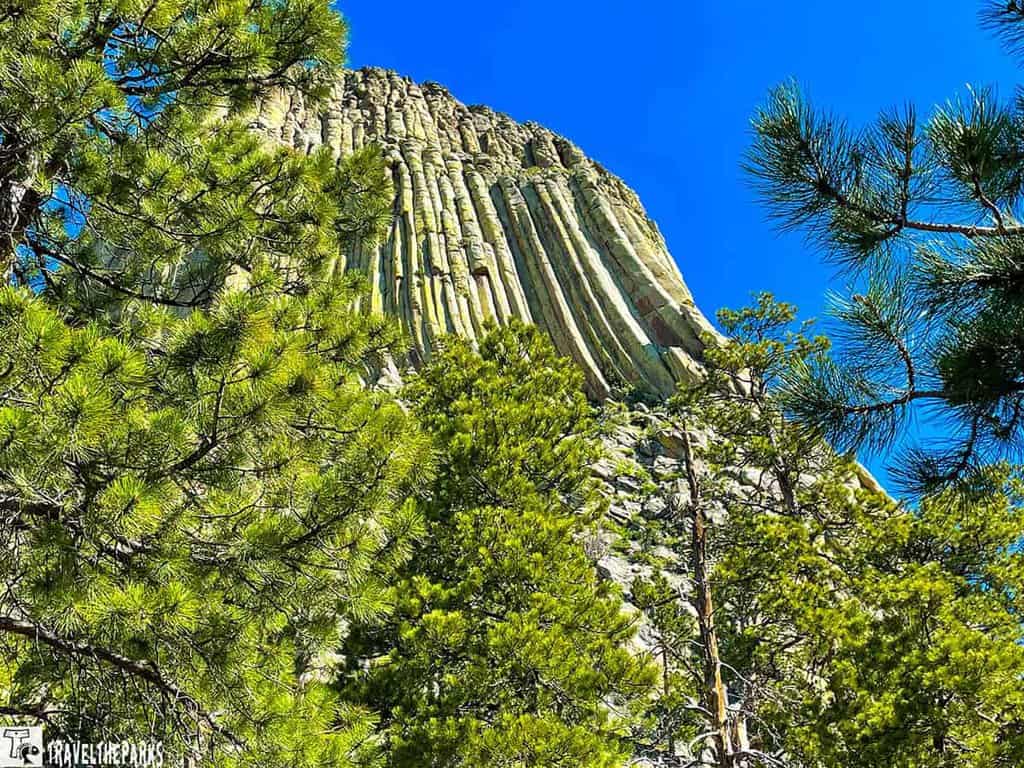
An Interesting Point: How Devils Tower Got Its Name
How did Devils Tower National Monument get its name? In 1875, during an expedition led by Colonel Richard Irving Dodge, a misinterpretation changed the course of the landmark’s history. One of Dodge’s interpreters mistakenly translated the Native name for the formation as “Bad God’s Tower,” which was later shortened to “Devil’s Tower.” Despite objections from many indigenous clans—who refer to the site as “Bear Lodge” or “Bear’s Tipi”—the name stuck and was officially adopted. Today, there are ongoing efforts to restore the monument’s original, culturally respectful name.
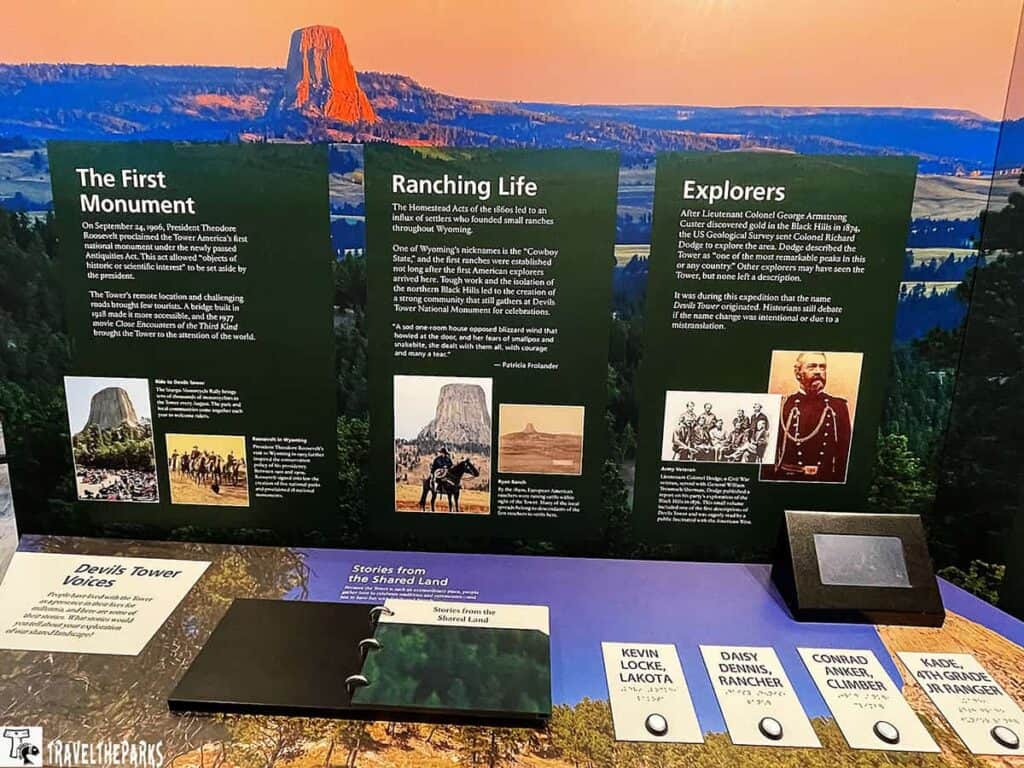
Sacred Stories and Legends of Devils Tower National Monument
As varied as the majestic monolith and its columns are the stories of Devils Tower National Monument. According to scientists, the rocks’ oldest stories reveal the geologic mysteries of their formation. Indigenous cultures have passed on many other stories. Most times, myths and legends should be referred to as oral histories or sacred narratives.
The Kiowa and Lakota clans tell the tale of a bear attacking a group of girls. To save their lives, they prayed to the Great Spirit. The legend states it formed when the rocks in the ground suddenly grew up, saving the girls. While clawing at the rock’s side, the bear left deep scratches. So that’s why it is called “Bear’s Tipi” or “Bear Lodge.”
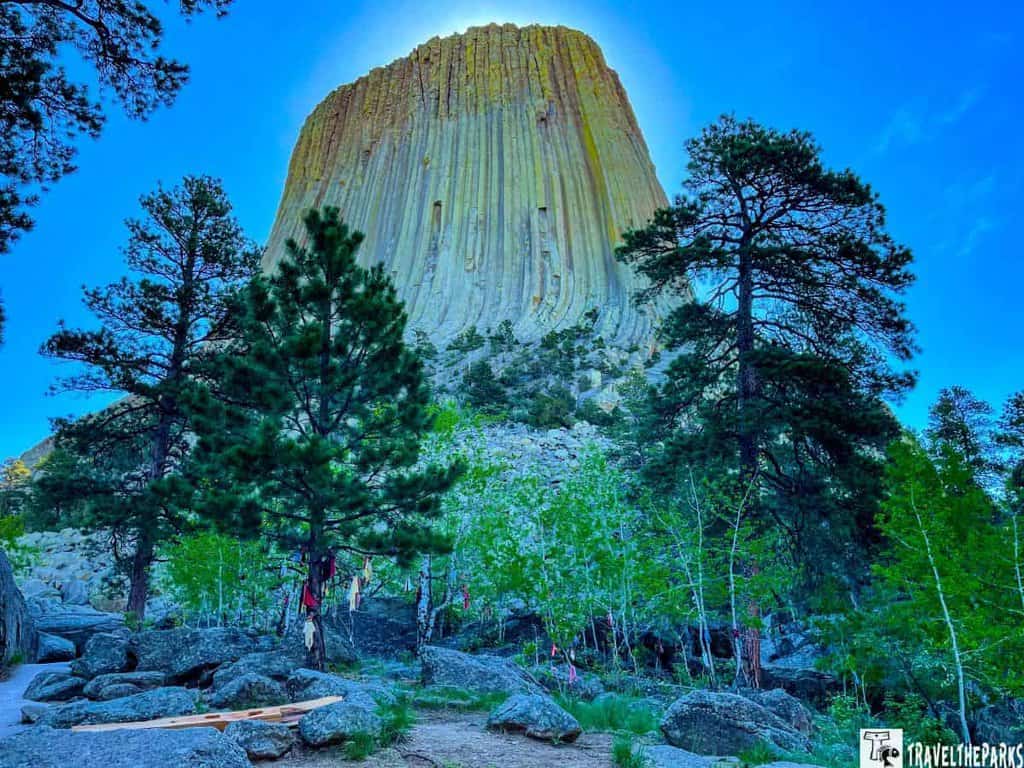
Similarly, the Sioux recount the tale of two boys who strayed from their village, only to be spotted by Mato—a bear with claws larger than tipi poles—who intended to devour them. In their prayers to Wakan Tanka, the Creator, they sought help for their situation. The rock rose. Mato then attempted to climb up the mountain from each side, leaving huge scratch marks in his wake. In the end, the bear gave up, disappointed, and decided to rest east of the Black Hills at what is now known as Bear Butte. They were helped off the rock by the eagle (Wanblee) and back to their village.
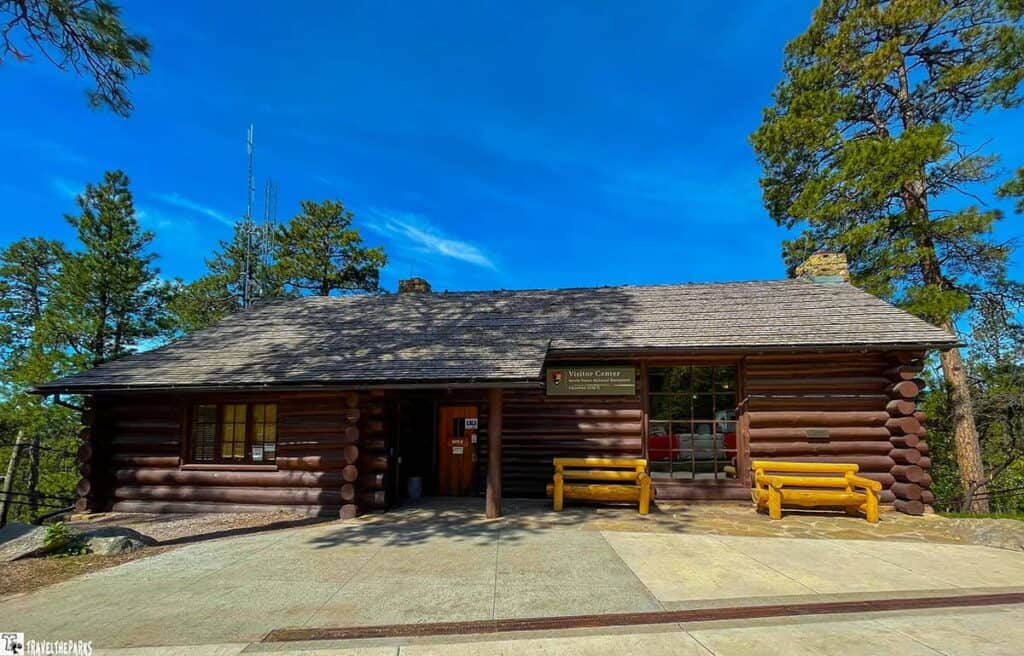
Things to Do at Devils Tower
1. Devils Tower Must-see Attractions: the Visitor Center
Check out the visitor’s center after you arrive at the parking lot. It’s a great place to get oriented before you explore. Built in 1935 by the Civilian Conservation Corps, the small ponderosa pine cabin is on the National Register of Historic Places. Visitor Center/ bookstore is open daily from 9am-6pm. Inside, we found interesting educational displays that explain much of the history of the park and the tower. Passport Cancellation Stamp is available outside visitor center 24 hours a day. Junior Ranger Programs and Ranger guided tours are also available here.
PRO Tip: Arrive early if possible, as the visitor center has very limited parking.
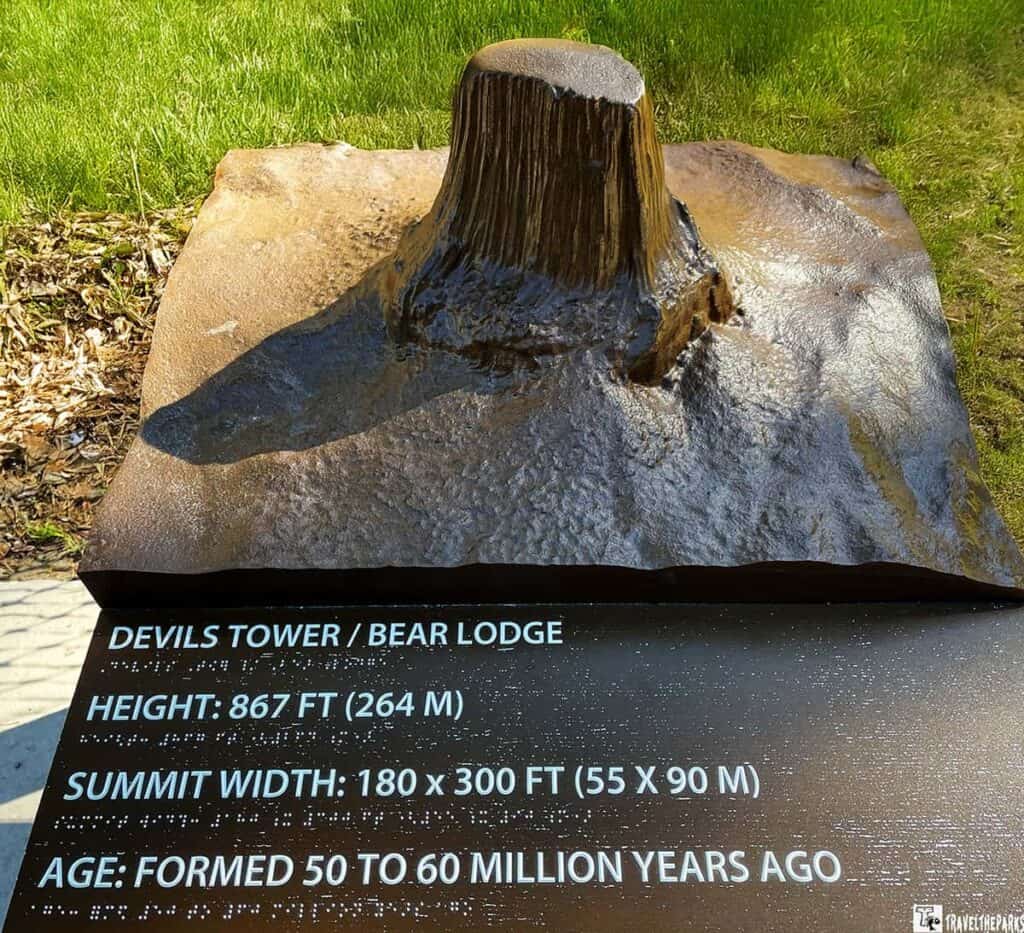
Geologic Wonders: How Devils Tower Was Formed
As we explored the exhibits inside the Visitor Center, we discovered fascinating insights into the Tower’s origins. While theories vary, most geologists agree that Devils Tower began forming around 50 million years ago, when magma pushed its way into layers of sedimentary rock beneath the surface. Over millions of years, erosion stripped away the softer surrounding rock, revealing the striking phonolite porphyry columns we see today—sculpted further by ice, wind, and rain.
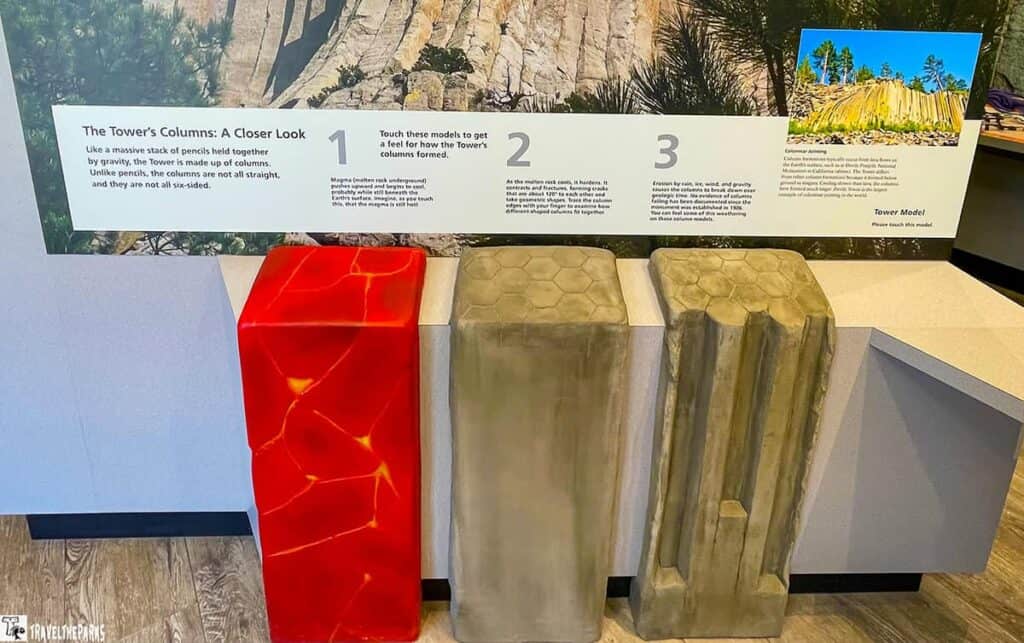
The Tower’s most iconic feature—its massive, vertical columns—are a result of a geologic process called columnar jointing, with some columns reaching up to 10 feet across. And despite what pop culture might suggest, the summit isn’t a crater from an alien encounter—it’s a naturally flat plateau, shaped entirely by Earth’s forces.
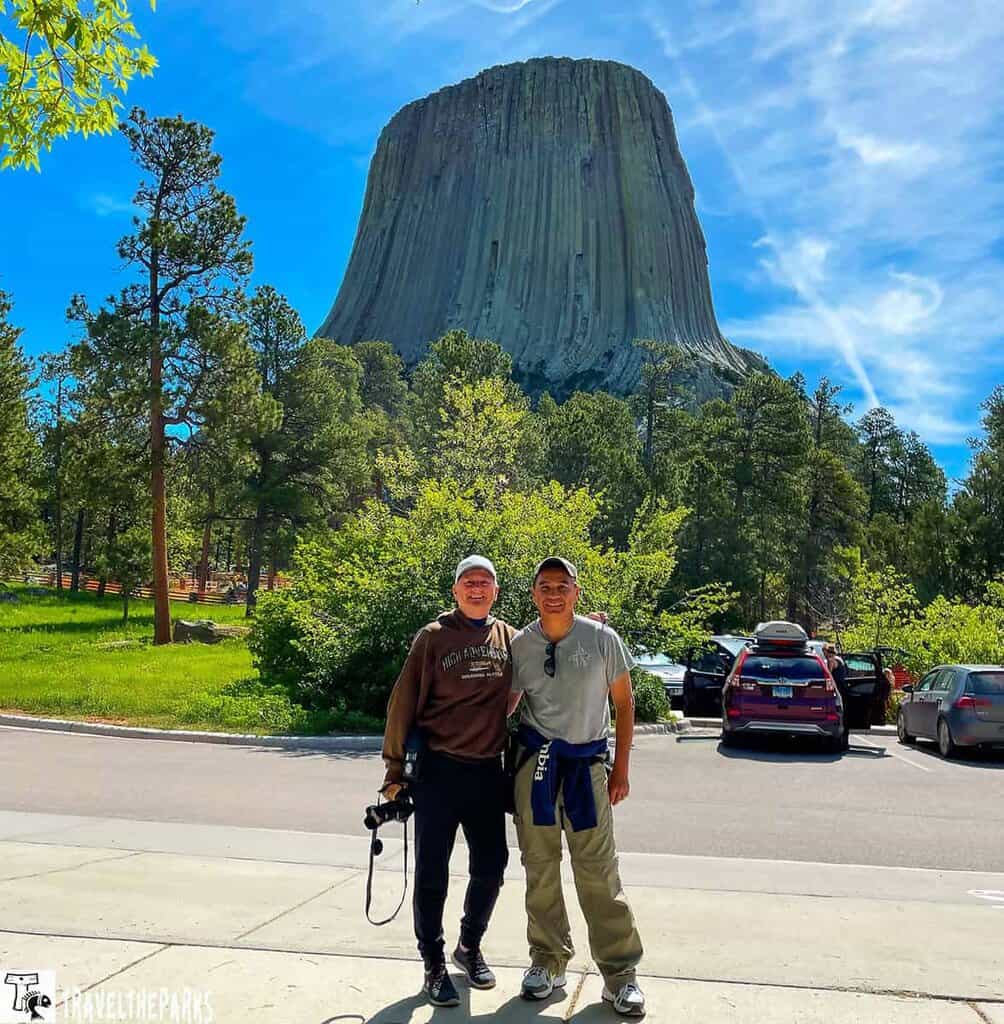
2. Circle the Tower: What to Expect Hiking on the Tower Trail
Walking the base of Devils Tower, I was surprised by how fascinating it really is. I sensed its sacred aura. Sitting quietly among prayer cloths, listening to the wind through the pines, left a lasting impression upon me.
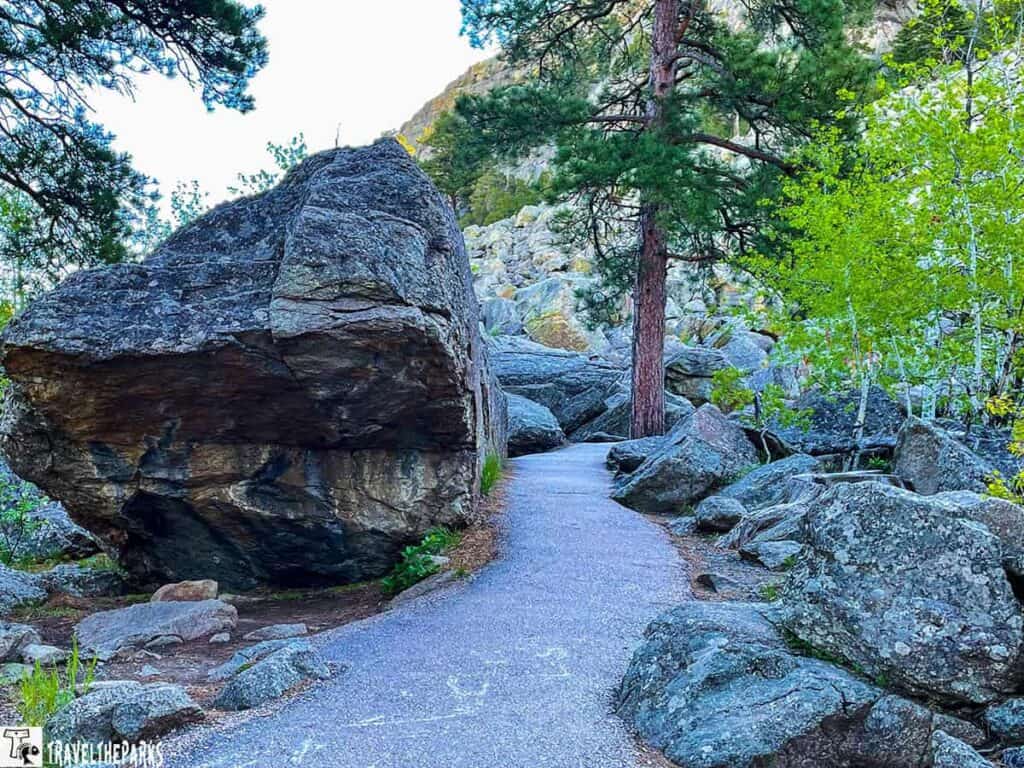
The park’s most popular hike is the 1.3-mile paved Tower Trail, looping the base of Devils Tower. Starting at the visitor center, it winds through ponderosa pines draped in Native American prayer cloths—honor annual ceremonies by avoiding photography if present. Enjoy views of the Belle Fourche River Valley, interpretive signs, and the Boulder Field, where eroded rock fragments pile beneath the Tower.
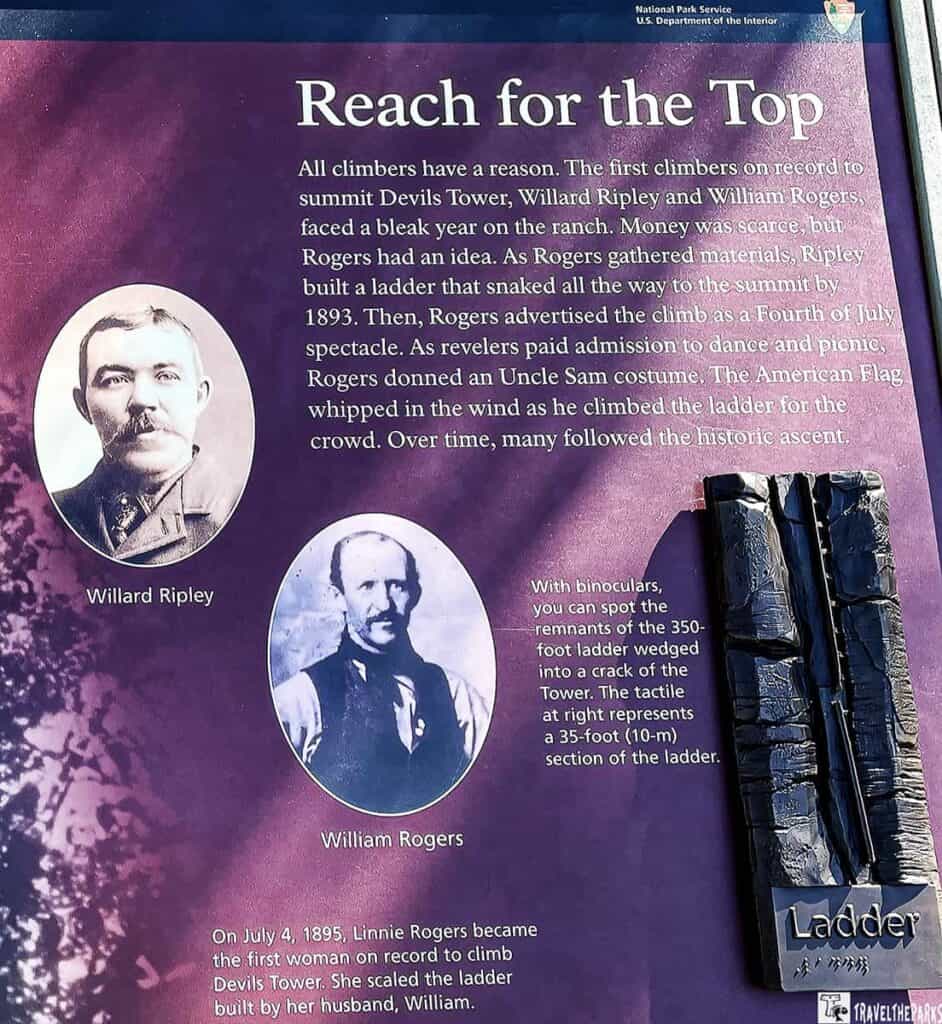
Midway, we spot remnants of the 1893 wooden stake ladder (170 feet up, now barely visible) or watch modern climbers ascend the columns. The trail’s mix of geology, history, and cultural reverence makes it unforgettable.
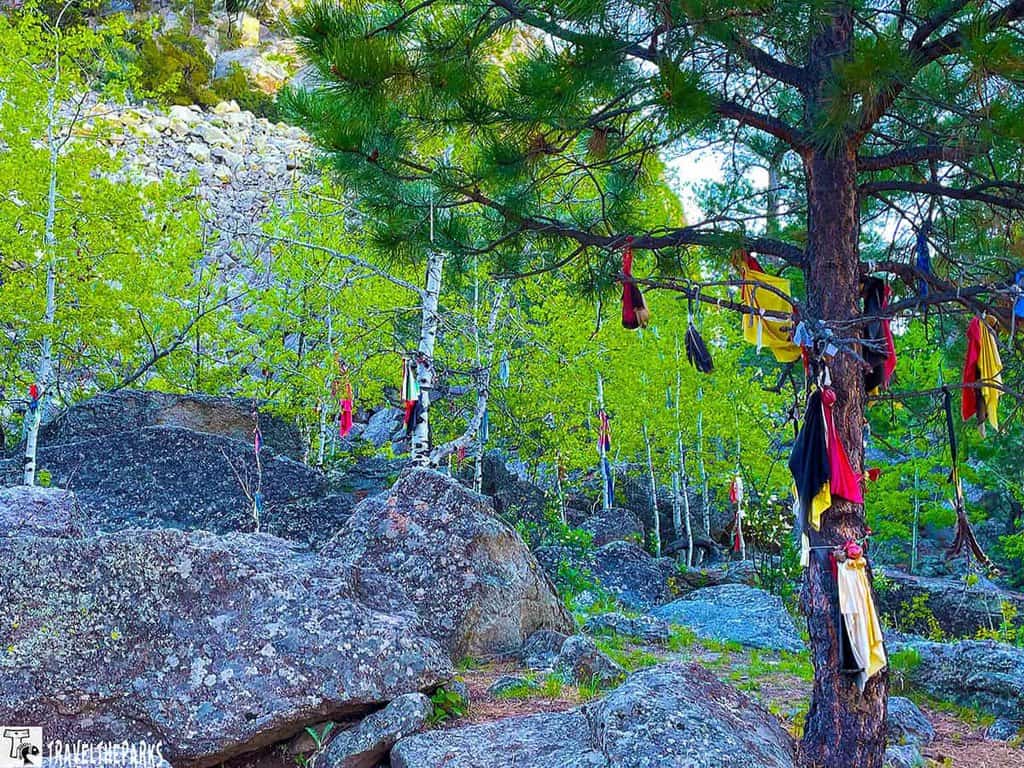
3. Scaling the Tower: Watch Rock Climbers Take on the Challenge
Rock climbers see this vertical intrusion as a challenge. It was extraordinary watching the climbers make their way, inching up the 1200 foot vertical walls. Those with experience choose their trail scaling to the top. There is no marked trail. There are, however, over 150 rock-climbing routes in the Devils Tower. It is possible to complete the climb up large hexagonal columns in as little as 4 hours, but most take longer. It was incredible to see.
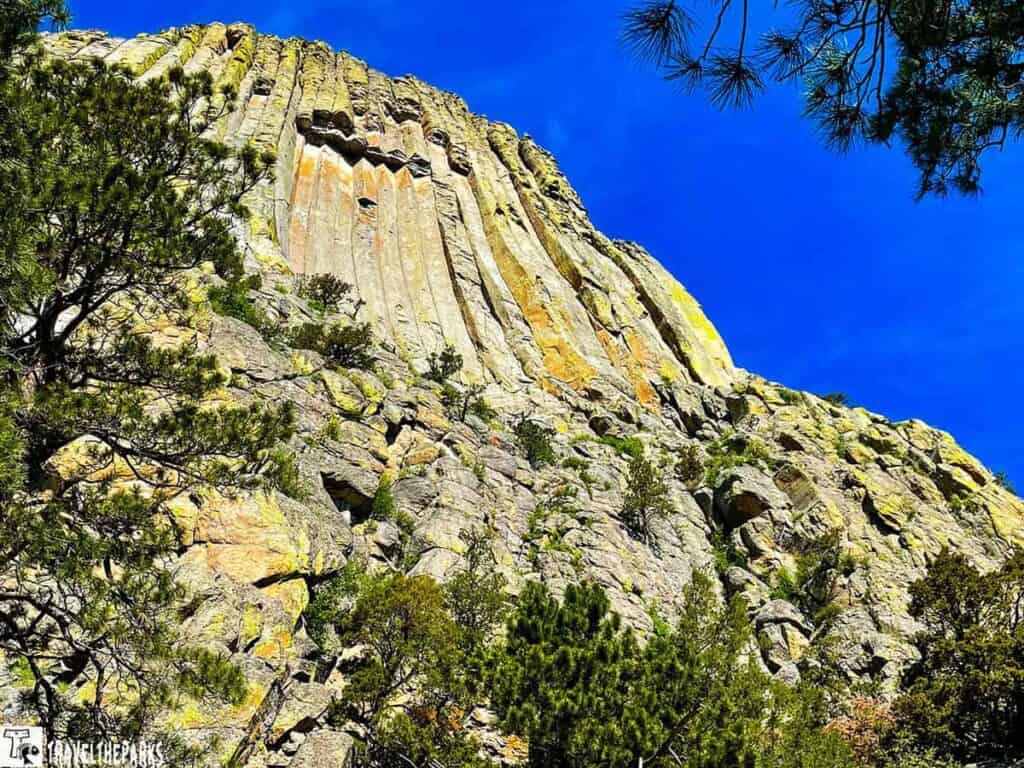
The tower trail provided a little known yet interesting fact. A parachutist named George Hopkins attempted to land on Devils Tower in 1941. As he was falling, a rope of 1000 feet missed the top of the tower and landed on the side of the tower where he couldn’t reach it. Despite being stranded for six days, he took advantage of the publicity that resulted from his situation. In the meantime, a plane dropped supplies and blankets to him on the tower as he awaited rescue.
Note: Climbers are required to register at the visitor’s center. Beware of snakes, rodents and other wildlife that call the tower home.
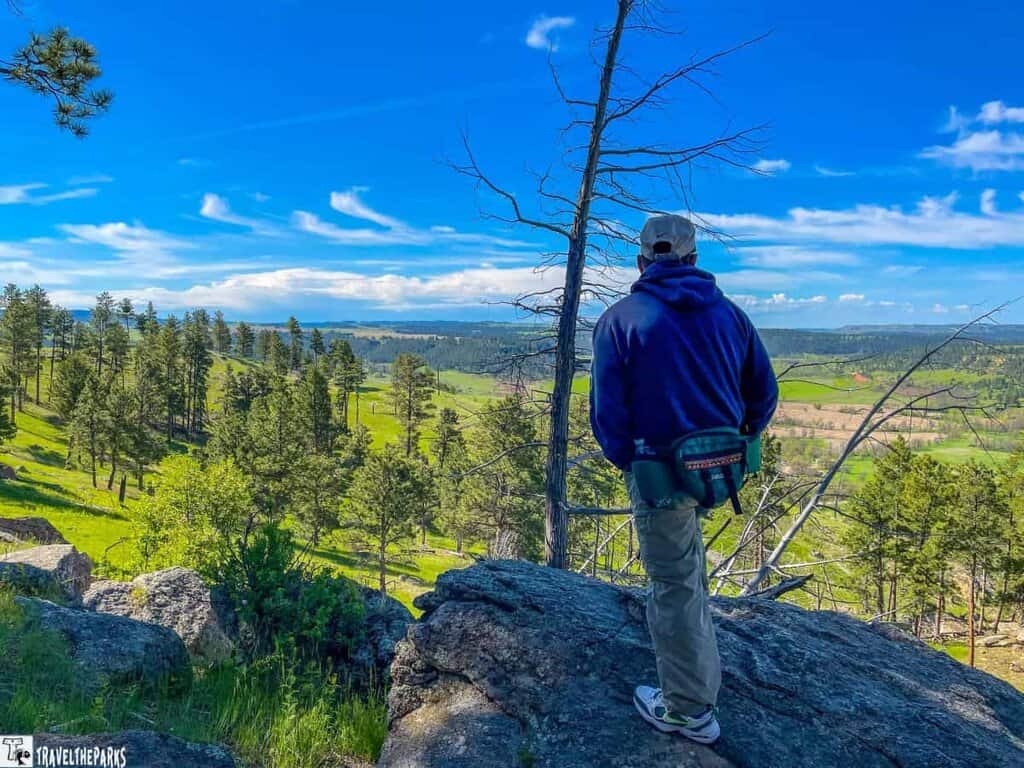
4. Hiking the Red Beds Trail: Scenic Views Beyond the Tower
We invested a considerable amount of time on the various tower trails. It seemed to me that each new path unfurls a fresh facet of the towers’ soaring pillars. The park’s mix of pine groves, grasslands, and woodlands seemed to be teeming with wildlife. We saw deer grazing in the morning mist, and lots of prairie dogs barking along the trails.
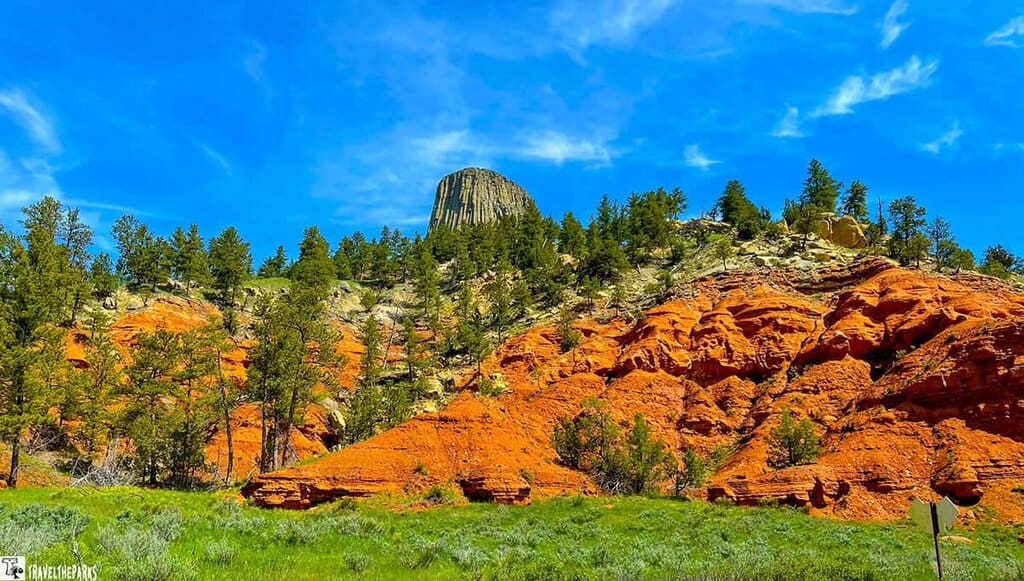
For a simple loop, we combined the 2.5-mile Red Beds Trail (flat and best for taking in the scenery) with the 0.6-mile South-Side Trail, a short connector with close views of the base of the tower. But the showstopper was Red Beds Trail, where the rust-red Spearfish Formation captured the eye. Its red hue—attributable to iron oxide minerals—is 200 million years old, dating back to ancient sandstone and shale. Don’t miss this geologic show; it’s like strolling through a layer cake of the history of the Earth. Download the park map here for trail details and planning.
PRO Tip: If you plan on doing any hiking, we recommend each person should bring at least one liter of water per hour to drink. Protect yourself from the sun and heat by also wearing sunscreen with a high SPF. Wearing a hat is a must.
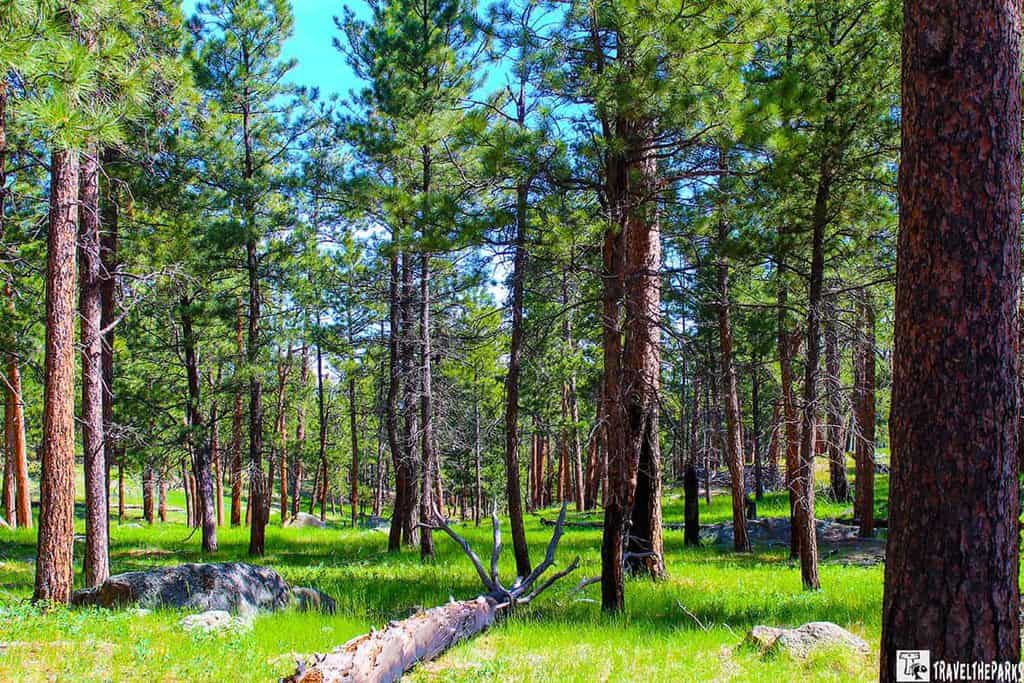
5. Take in the View from Joyner Ridge Trail
A hike along the 1.5 mile Joyner Ridge Trail. It offers beautiful views of the Tower while following the ridgeline. It passes through tall grass prairies and dense forests. The Joyner Trail is one of the monument’s lesser-known quieter trails and offers a chance to explore another part of the monument. It is a great place to get away from the crowds. This1.5-mile moderately challenging walking trail gives visitors the opportunity to explore the monument in another way. It is off the beaten path a hidden treasure.

6: Travel Guide Must Do: Visit the Circle of Sacred Smoke Sculpture
The sculpture by the Japanese artist Junkyu Muto symbolizes peace. Sitting atop a massive granite base, they took the marble rock for the sculpture from Italy’s Fantiscritti Quarry. Said to be the source of Michelangelo’s marble. She carved it to raise awareness of the native clans that find this to be a sacred place. It represents a puff of smoke as it leaves the ceremonial pipe and rises. I just love how it frames the monument.
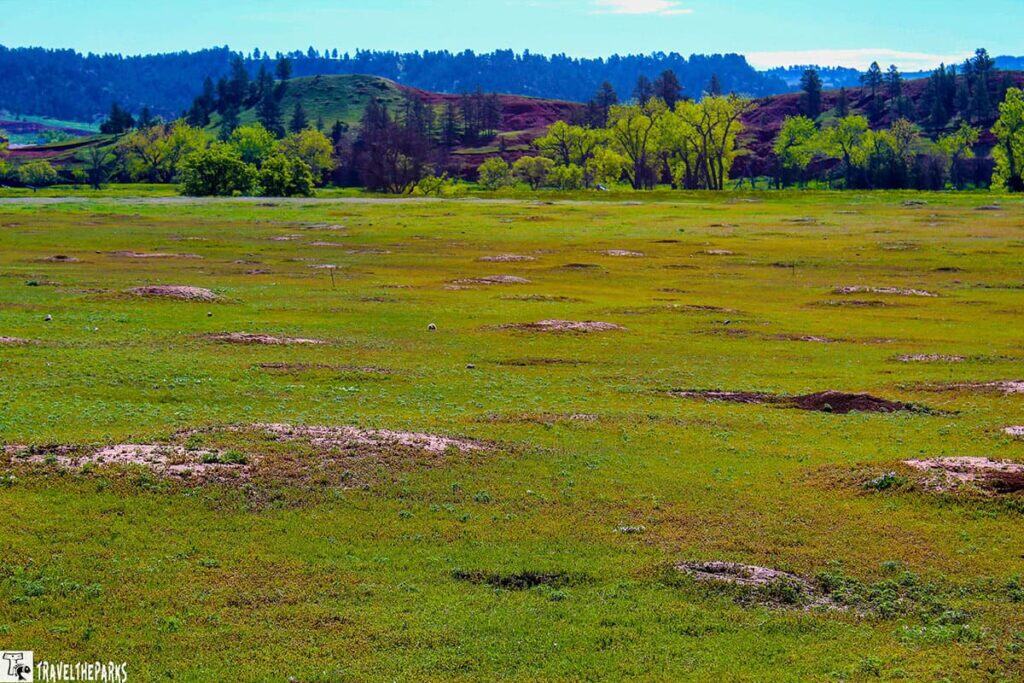
7. Visit Prairie Dog Town: A Must-See Stop at Devils Tower
Prairie Dog Town, located off the highway, offers a close-up experience to watch an active colony. I took a break on my hike up to the Circle of Sacred Smoke Sculpture to watch them rush between holes. Their high-pitched squeaks echoed across the meadow—an alarm system warning the others of the presence of yet another visitor. It’s a nice and lively place that’s a must-see.
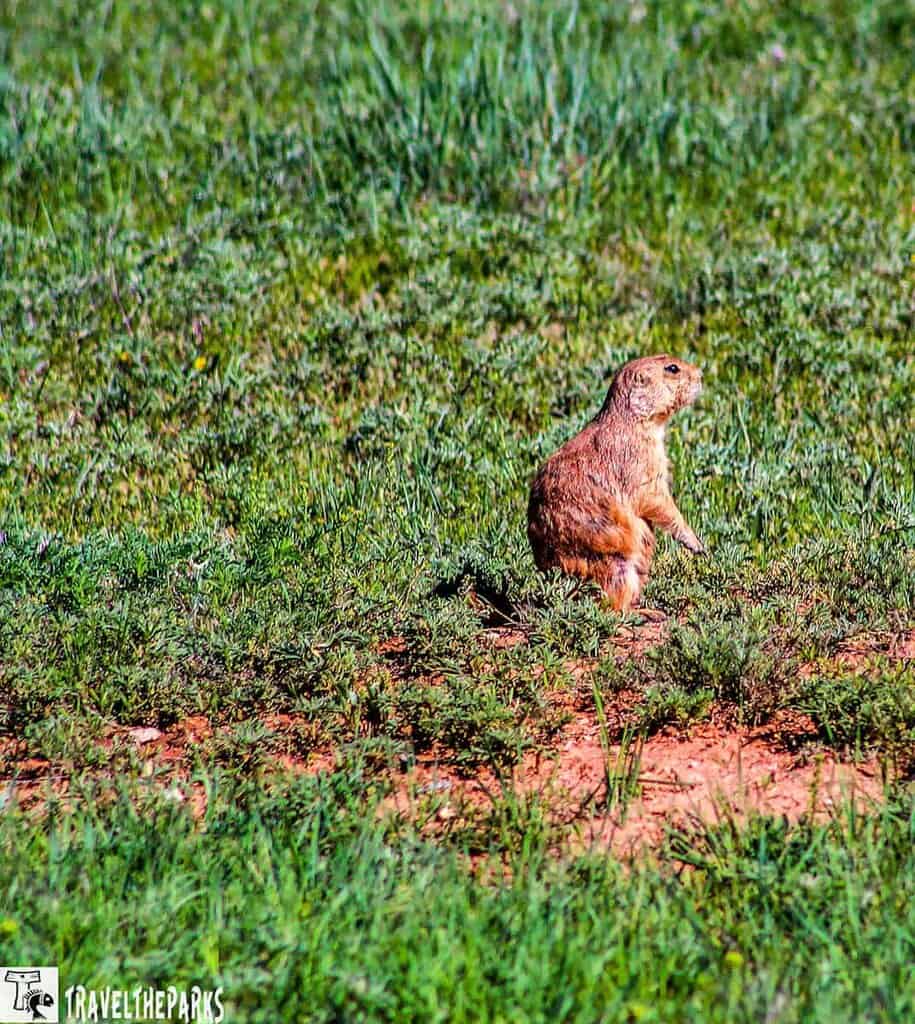
Devils Tower National Monument is also home to a variety of wildlife, including elk, deer, wild turkeys, bald eagles, and black bears—perhaps the most entertaining resident is the black-tailed prairie dog. These communal, burrowing animals are a vital component of the prairie ecosystem. Since they are a keystone species, their digging helps to recycle topsoil and maintain prairie grass health, as well as serving as a source of food for their predators, golden eagles and coyotes.
Friendly reminder: please do not feed the prairie dogs or any wildlife. These animals have a specially adapted diet tied to their environment and anything consumed outside of their natural diet can cause serious health complications for these critters. Remember, leave no trace.
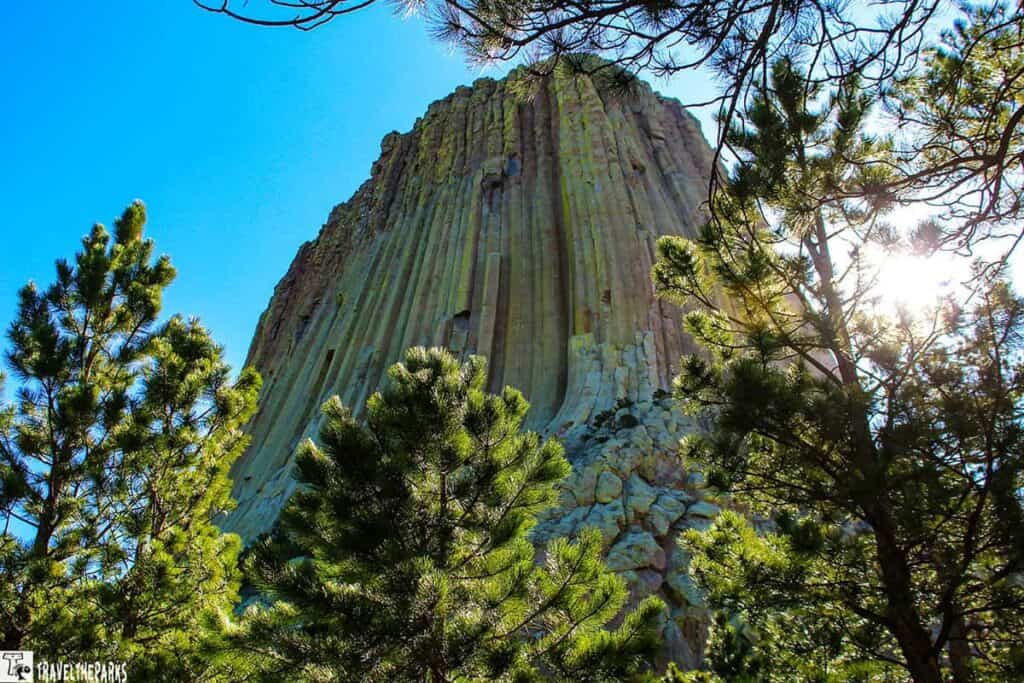
8. Photograph the Tower at Sunrise or Sunset
Golden hour is the perfect time to capture the dramatic beauty of Devils Tower. Soft morning light or fiery evening skies highlight the tower’s rugged texture and towering presence. For the best views, head to Joyner Ridge or pullouts along the main park road.

9. Stargaze Under Dark Skies: Devils Tower After Dark
If you have the time in your schedule after the sun sets, Devils Tower transforms into a stargazer’s paradise. At least that is what I have been told, since we could not stay late. With minimal light pollution, the monument offers exquisite views of the night sky—perfect for spotting constellations, shooting stars, and even the Milky Way on clear nights. If you can add this to your travel guide, I’d bring a blanket, lay back, and enjoy nature’s celestial show.
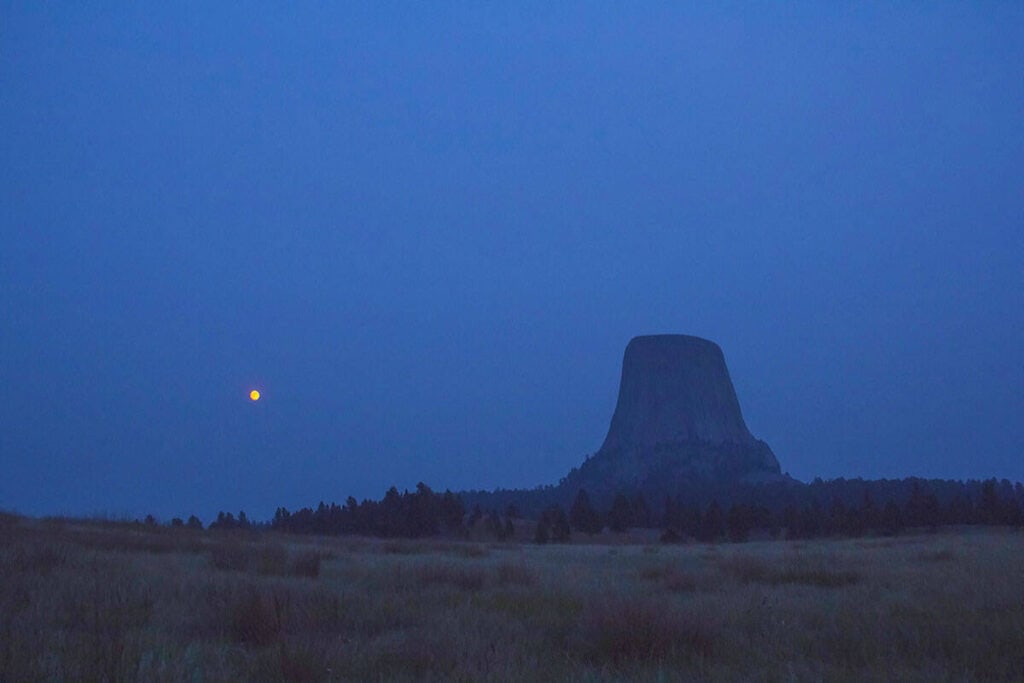
Final Thoughts: Interesting Reasons to Visit Devils Tower National Monument
We weren’t sure Devils Tower would be worth the stop on our Dakota road trip—but it completely blew us away. As kids of the ’70s, we’d seen Close Encounters of the Third Kind, but nothing compares to seeing it in person. It’s a magical, awe-inspiring place that captured our imagination more than we ever expected.
Have you ever visited Devils Tower, Wyoming or the Black Hills, South Dakota? If so, what were your favorite places? Please let us know by leaving us a comment below.


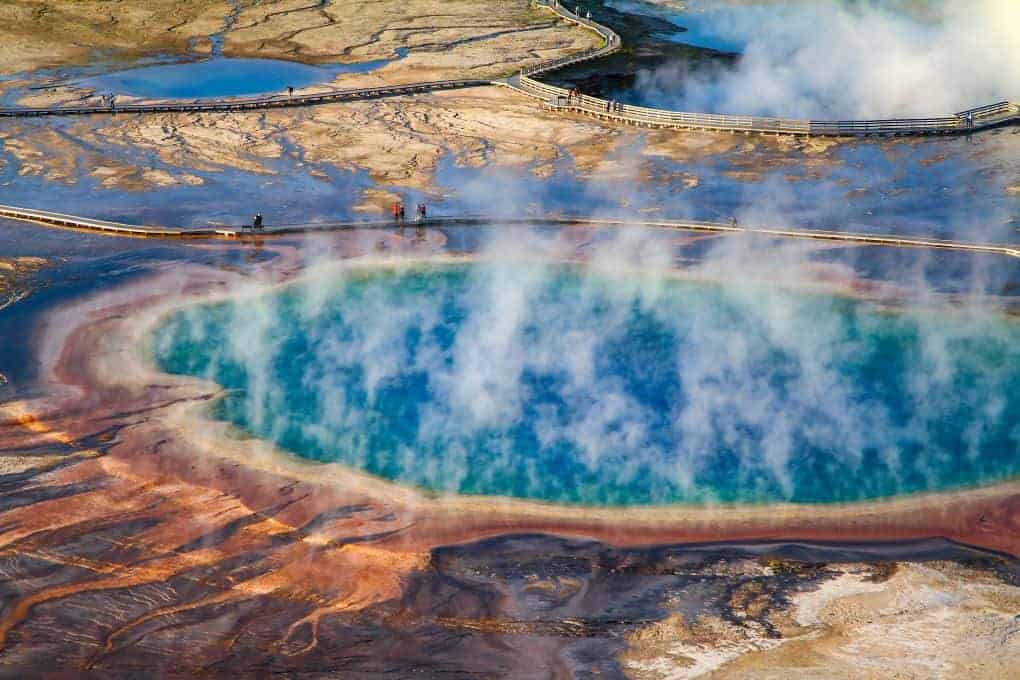
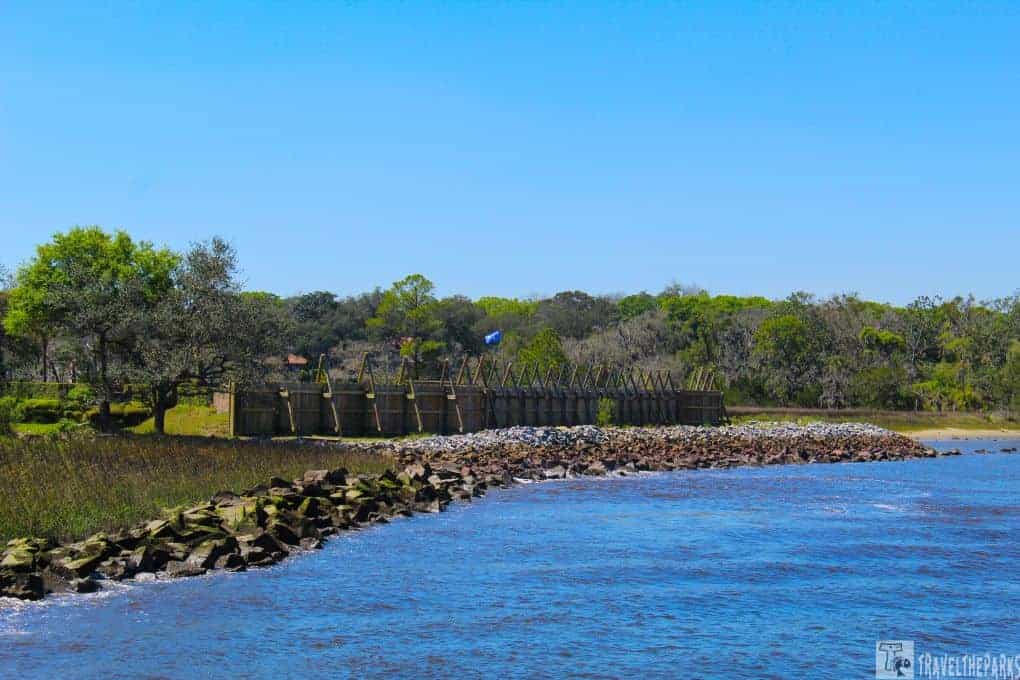
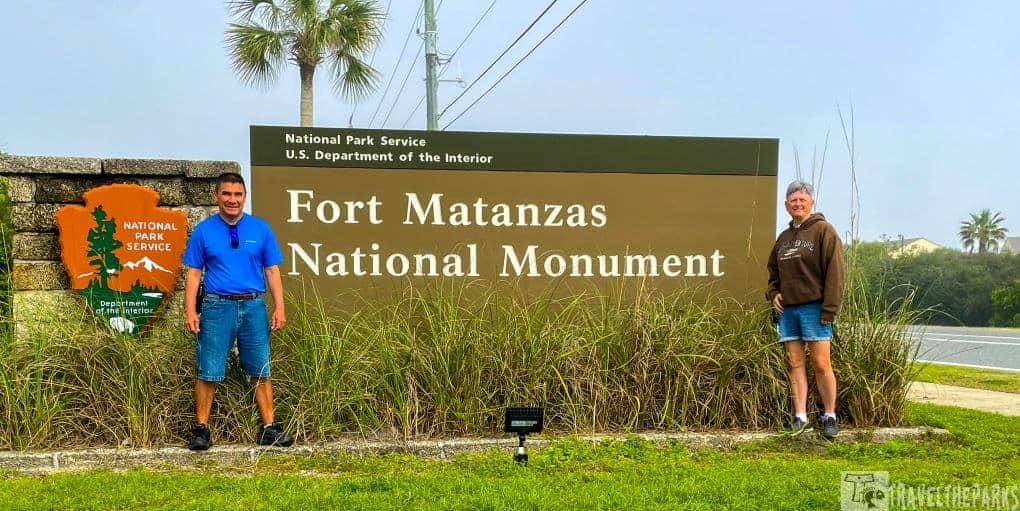
Jason
Love your images and reading about your trip! We too loved Devils Tower, the prairie dogs were our favorite, but the views from the trail were also beautiful!
Travel the Parks
Thank you so much for your comment. Yes we found the prairie dogs to be delightful. Again thanks for reading our blog!